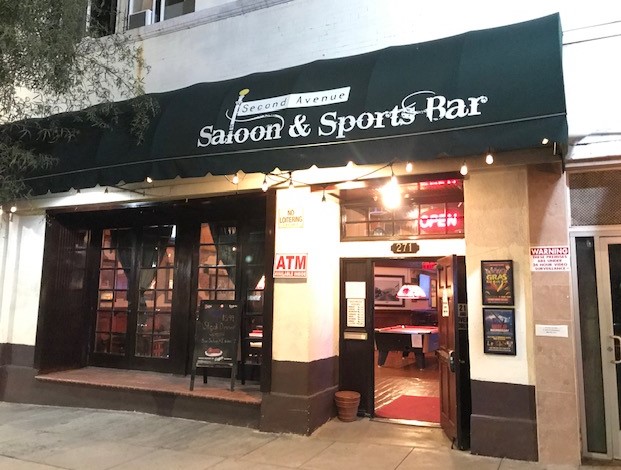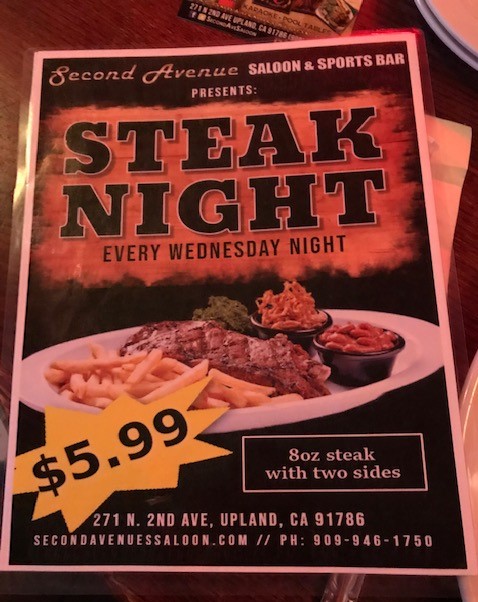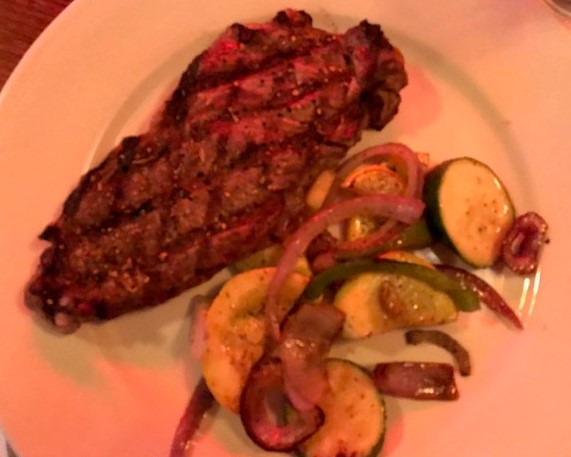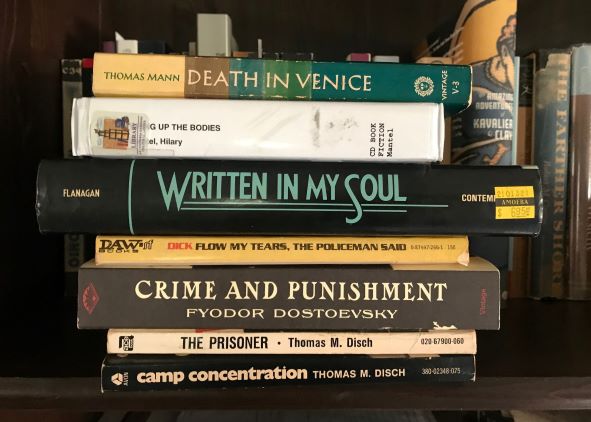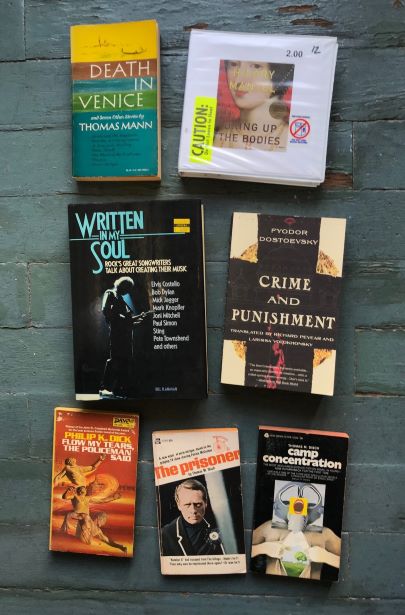I recall random things about my kindergarten through sixth grade teachers, the ones who set me off on a strong footing in life, in Friday’s column. Hail, elementary school teachers! Photo that appears with the column is of my fourth-grade class. As a bonus for you blog readers, above is my third-grade class. Can you spot me?
Monthly Archives: August 2020
Restaurant of the Week: 2nd Avenue Saloon
2nd Avenue Saloon, 271 N. 2nd Ave. (at 9th St.), Upland; open daily, 4 p.m. to 2 a.m.
Note: This post, about a meal in late February, was prepared prior to the pandemic. The restaurant is now offering outdoor dining on Second Avenue.
A friend messaged me recently with a photo of a flier in the window of 2nd Avenue Saloon for $5.99 Steak Night, which is each Wednesday. We made a plan to meet (meat?) up.
The bar and restaurant, formerly Old Baldy Brewing Co. and the Sea Cove, opened in 2008, and I realized I’d never been inside, only to neighboring JD Allison’s. The layout inside 2nd Avenue Saloon seems completely different than Old Baldy, but then it’s been more than a decade and perhaps my memory is off. A couple of pool tables greet you when you walk in, then there’s a classic-looking bar, plus tables and booths, and a second “VIP” room for parties, karaoke and live music.
I’d enjoyed Steak Night at nearby Charlie’s Stars and Stripes, which began at $5, included a steak, baked potato and salad, and supposedly required a drink purchase, although the staff didn’t enforce that (once or twice, not knowing the requirement, I ordered water). The price rose to $7 and the day of the week changed from Monday, which had made it a good place to eat before a council meeting, to Wednesday, and I got out of the habit. (It’s still taking place and now costs $8.)
There’s a special every night at 2nd Avenue Saloon. We each ordered the steak, which comes with two sides. Options included fries and onion rings, but not baked potato. I got a salad and mixed vegetables, as did my friend. The salads were served on individual plates and were substantial.
The steaks came out soon, grilled green and yellow zucchini and onions on the side (see above). The server told us she thought our veggie servings were undersized and had instructed the kitchen to make more. That extra serving came out in a couple of minutes on a separate plate and we split it up.
My sirloin, medium rare, was great. I ate half and took home half, along with some veggies. My friend ate all of hers but wished she’d followed my sterling example of restraint. I’ve always thought more people should emulate me but they rarely agree.
Also, we only ordered waters, so the total bill for both of us with tax was around $14. Thanks, 2nd Avenue Saloon.
Column: Shoppers saddened by loss of local Nordstrom stores
A reader said I should write about the demise of the Inland Empire’s two Nordstrom stores, which closed in May (but were essentially already closed) without fanfare. That was a good idea, and I took her up on it for Wednesday’s column. It didn’t hurt, naturally, that the column might appeal to readers across a geographic span.
Column: Readers haven’t forgotten Fred Claire’s byline
I follow up my recent column on former Progress-Bulletin sportswriter Fred Claire with comments by readers who remember his work of a half-century and more ago, plus a few comments of my own about the new book on him, all in Sunday’s column. He went on to spend 30 years with the Dodgers, culminating as executive vice president.
Column: He was Enola Gay’s radioman on the Hiroshima mission
The 12-man crew on the Enola Gay is gone, but the widow of the radio operator, Richard Nelson, still lives in Riverside. We spoke Thursday, 75 years to the day of the mission that dropped the first atomic bomb, for my Friday column.
Restaurant of the Week: El Sinaloense
El Sinaloense, 9673 Sierra Ave. (at San Bernardino), Fontana; open 10 a.m. to 10 p.m. daily, and at 9 a.m. Friday to Sunday
Note: This post, about a meal in February, was prepared in early March, prior to the coronavirus shutdown.
On my way to a Fontana council meeting one recent evening, I saw the glowing sign for El Sinaloense and on an impulse pulled into the parking lot. It’s in a small business center with an insurance office and more, with the restaurant in the elbow of the L-shaped complex.
There’s a large dining room painted a cheery orange with green accents. You have your choice of booths or tables, and they’ll wait on you. El Sinaloense means “The Sinaloan” and is such a popular song in the banda style that it’s practically the Mexican state’s anthem.
The menu has tacos, burritos, mulitas and tostadas, with an emphasis on seafood and birria, which is stewed goat or beef (the menu didn’t specify which). In fact they make an item called the quesabirria, a quesadilla with birria.
Birria fan though I am, I went for a single taco gobernador ($5.50), which is marlin and shrimp, after being assured the tacos are large. (A poster on the wall showed two on a plate, but an order is just one.) A few minutes later, the cook brought it to my table and presented it with a near-flourish. The taco was indeed large, in a handmade corn tortilla, with small shrimp, chunks of marlin and a bit of melted cheese, the whole thing grilled. On the side was shredded lettuce, chopped tomatoes and onions, and a cup of avocado cream sauce.
The result was delicious, especially spiked with the condiments. This would not have constituted a meal under most circumstances, but being moderately hungry, the taco was moderately filling, so I left satisfied.
El Sinaloense also serves beer and Micheladas (the restaurant’s name ends with “Tacos & Beer”) and $25 towers of meat and vegetables for groups. As I left, the dining room that had been near-empty at 6 p.m. was getting busier. I’m glad I pulled into El Sinaloense.
Column: They don’t mean to bug, but they have a pest control app…
UC Riverside-based FarmSense is a tech startup aimed at farmers. Its goal is to provide “the next generation of insect monitoring.” How could I resist? I write about it in my Wednesday column.
Reading Log: July 2020
Books acquired: “Extra Innings,” Tim Madigan
Books read: “Death in Venice,” Thomas Mann; “Bring Up the Bodies,” Hilary Mantel; “Written in My Soul,” Bill Flanagan; “Flow My Tears, the Policeman Said,” Philip K. Dick; “Crime and Punishment,” Fyodor Dostoevsky; “The Prisoner,” “Camp Concentration,” Thomas M. Disch
We’ve entered the dog days of August, so put your cat clothes on as we discuss whatever we read in July. In my case, I finished seven books, the titles of which form almost the outlines of a narrative of death, exhumation, spirits, police and the correctional arm. Crime and punishment, you might say. I kind of wish I hadn’t read Kafka’s “The Trial” a year ago or that would have slotted right in.
In point of fact, none of these books have very much to do with each other. They comprise, in order, a book of literary short stories, a novel of historical fiction, a collection of interviews with singer-songwriters, a science fiction novel, a classic Russian novel, a TV tie-in novel and another science fiction novel.
Now, let’s hustle to the scene of the crime:
“Death in Venice and Seven Other Stories” (1903): These eight stories (ranging from 28 to 75 pages) are all at least interesting, and very good in the case of the unsettling title novella. Mann’s carefully wrought prose reminds me of Henry James, a writer who’s easier to admire than warm to, and the almost dialogue-free prose requires concentration. While some stories are borderline pretentious, there’s also “A Man and his Dog,” about just that, and as detailed a character portrait of a canine as you’re likely to find outside of Jack London.
“Bring Up the Bodies” (2012): The Cromwell saga continues, and Thomas More, whose death ended the first book, casts a moral shadow over this one, as Cromwell begins to slide into villain territory. This saga won’t end well. But the middle book is as gripping as the first, and shorter besides. As an audiobook, Simon Vance’s reading is fine but to me doesn’t have the range of Simon Slater’s work on Book 1.
“Written in My Soul: Rock’s Great Songwriters Talk About Creating Their Music” (1986): Thoughtful Q&As with singer-songwriters out of the rock (not pop or soul) tradition. Overwhelmingly male and white, true, and some of the choices (Mark Knopfler, Rickie Lee Jones, Lowell George) haven’t stood the test of time. But Flanagan gets illuminating answers from people as disparate as Carl Perkins, Elvis Costello and Joni Mitchell, and Dylan gives one of his better interviews.
“Crime and Punishment” (1866): It’s vile, it’s nonsense, I spit on it! Just kidding; those are Russian idioms that pop up frequently. I was surprised how compelling, odd and moving this intimidatingly hefty novel is. The murders take place early on and we know who did it and why. Why is there another 400 pages? Just ask police detective Porfiry Petrovich, an antecedent of Lt. Columbo, who likes to pretend to be mixed up.
“Flow My Tears, the Policeman Said” (1974): In a near-future police state America, popular TV entertainer Jason Taverner is attacked, goes to the hospital and wakes up in a shabby hotel room, soon realizing his identity cards are missing and no one has ever heard of him. The eventual explanation for what happened isn’t entirely satisfying, and the attack was a MacGuffin. But this is one of PKD’s better novels, layered and compelling. The policeman’s tears are important too.
“The Prisoner” (1969): A paperback original based on the cult TV series, this was a lark for a writer of Disch’s ambition. (It’s said he needed the quick payment.) The result is a slightly arty TV novelization, or an almost mainstream Disch novel. Fifty years on, it remains the Disch book most likely to be found at a used bookstore. The story is enjoyable, starting at the beginning of Number Six’s imprisonment (or does it?) and wrapping up in a satisfying way that reveals the identity of Number One (possibly?). Elusive and playful.
“Camp Concentration” (1967): Written as journal entries, this is about a plush prison for unwitting patients in a military experiment that boosts their intelligence (hence the title pun) but ultimately kills them. Supposedly they’re there to come up with better ways to kill the enemy, but mostly they put on plays, quote poetry and practice alchemy. Is this a great novel? Er, maybe? Erudite, mannered, Disch just leaves me cold.
Best of the month was “Crime and Punishment,” with “Bring Up the Bodies” and “Written in My Soul” both close seconds in their own disparate ways. The others were enjoyable, with “Camp Concentration” the one I didn’t care much for.
That’s a small story in itself. Confronted by nine titles by Disch in the science fiction section of an excellent used bookstore in Goleta, Paperback Alley, in 2013, I bought eight of them on faith, knowing Disch’s reputation and knowing his books are hard to find. By this point I’ve read five of the eight and candidly didn’t much like any of them. Gong! I’m keeping an unread best-of story collection but am ditching the other two (and one bought elsewhere). He’s just not the writer for me.
Where’d this month’s books originate? Mann was bought circa 1982 in Illinois somewhere, “Tears” may date to the late 1980s (but I can’t remember), “Soul” from Amoeba Music in 2002, “Crime” from Borders in 2006, “Prisoner” and “Camp” from Paperback Alley in 2013, and “Bodies” was checked out from the Rancho Cucamonga Public Library in June.
How was your July, readers? Let us know in the comments. To skip this month’s comments would be…a crime.
Next month: Shakespeare, plus baseball.
Column: Health club throws in the towel after 47 years
The venerable Claremont Club shut its doors Friday. Of course its doors were already shut due to coronavirus, which was the problem. With no revenue coming in, owners decided to shutter for good and sell the 19-acre property. I write about that in Sunday’s column.
You might like knowing that I’d written a draft of a column about “The Twilight Zone” Thursday afternoon, intending to finish that on Friday. But news had broken about the club’s closing, the Courier had a short story online, and I thought I might as well drop by the club Friday morning on my way into work and see if I could snag enough people to turn a column around quickly. Sure enough, I spoke to a couple of people in the parking lot and the club’s CEO let me in for an interview and photos.
Sorry, “TZ” fans, but your day will come, maybe next Sunday. In the meantime, it was kind of fun to report and write a column from scratch, and take photos, all in a few hours.


